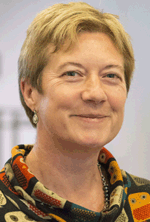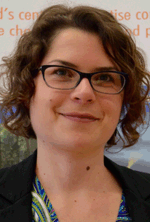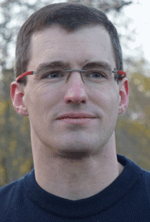Bursting bubbles: can experiments and analogues help stakeholders and the public visualise risks?
Linda Stalker A D , Jennifer J. Roberts B and Leslie Mabon CA CSIRO, 26 Dick Perry Avenue, Kensington, WA 6151, Australia.
B Department of Civil and Environmental Engineering, University of Strathclyde, Glasgow, Scotland, G1 1XJ.
C School of Applied Social Studies, Robert Gordon University, Scotland, AB10 7QG.
D Corresponding author. Email: linda.stalker@csiro.au
The APPEA Journal 58(2) 612-616 https://doi.org/10.1071/AJ17091
Accepted: 6 March 2018 Published: 28 May 2018
Abstract
Laboratory experiments, natural analogues and pilot projects have been fundamental in developing scientific understanding of risk and uncertainty from georesource exploration. International research into CO2 and CH4 leakage provide scientific understanding of potential leakage styles, rates and environmental impacts. However, the value of these experiments as a communication tool for stakeholders and the wider public is often overlooked in the form of visual information and comparisons. Quantifiable laboratory experiments, measurement of gas at natural springs or controlled release of CO2 (e.g. Quantifying and Monitoring Potential Ecosystem Impacts of Geological Carbon Storage Project (QICS)) raise awareness and commitment to understanding environmental impacts and geological complexities. Visuals can greatly facilitate communication, and research into public understanding of the subsurface demonstrates that quality and scale of schematics can affect perceived risk. Here we consider how public perception of subsurface activities could be shaped by relevant and applicable research that shares accessible and visually engaging information. Could images showing bubbles of seeping gas, or showcasing monitoring methods and capabilities, help to contextualise risks and geoscientific concepts and shape opinions? Can these materials aid dialogue between the wider scientific community, publics and stakeholders? We propose that future projects could improve dialogue through use of context-appropriate visuals to enhance dialogue on risks, impacts and monitoring of subsurface engineering technologies.
Keywords: carbon capture and storage, CH4 and hydrocarbon seepage, CO2 seep, engineering the subsurface, dialogue, field experiment, geoenergy, images, leakage, natural analogue, public perception, research impact, science communication, social license, stakeholder perception.

Dr Linda Stalker obtained a BSc (Hons) in Applied Geology (University of Strathclyde, Scotland) in 1990. Her PhD on petroleum geochemistry and CO2 generation, was gained at the University of Newcastle-upon-Tyne. In 1994 she joined the University of Oklahoma (USA) on a Department of Energy sponsored post-doctoral study into organosulfur compounds trapped in coals. From 1996 she worked in petroleum E&P at Statoil, in Norway, including 2 years on the Sleipner Field. She joined CSIRO in 2000 as leader in gas geochemistry specialising in analysis and interpretation of carbon and hydrogen isotopes of oil and gases for the petroleum and CBM sectors. She transitioned back to CO2 related research through activities with the CO2CRC (The Cooperative Research Centre for Greenhouse Gas Technologies) conducting research in the geological storage of CO2 and in the area of monitoring and verification (tracers). Since 2010, Linda has worked closely with the WA Department of Mines, Industry, Regulation and Safety on the South West Hub CCS project, conducting site characterisation for a possible storage site for CO2. Linda has been the Science Director of the National Geosequestration Laboratory (NGL) for 7 years and is Group Leader in Exploration Geosciences. |

Dr Jennifer Roberts is an interdisciplinary researcher, bridging the physical and social sciences in order to inform how the necessary transition to a low-carbon energy system can be designed and implemented in a way that is acceptable to society, and environmentally and economically effective. Her work in carbon capture and storage focusses on mitigating and detecting CO2 leakage, and the consequence for site assessment, monitoring and community engagement. For the past 5 years, Jen has worked as a Research Associate at the Department of Civil and Environmental Engineering at the University of Strathclyde, Glasgow (Scotland). From 2013 to 2016 her post was funded by ClimateXChange – Scotland’s Centre of Expertise on Climate Change, which brings together a range of researchers to provide independent advice, research and analysis on climate change and climate change policy in Scotland. Prior to joining Strathclyde in 2013, Jen was a researcher at the Scottish Carbon Capture and Storage Group based at the University of Edinburgh, where she obtained her PhD on natural CO2 seepage. Jen is an active member of the UK Carbon Capture and Storage Research Centre, the Geological Society of London, and the IEAGHG community. |

Dr Leslie Mabon is Senior Lecturer and Research Lead in the School of Applied Social Studies at Robert Gordon University in Aberdeen, Scotland. He is an environmental social scientist with a particular interest in some of the more ethically challenging aspects of climate change mitigation and adaptation. Leslie’s work in CCS focuses on balancing stakeholder and citizen views within decision-making processes, and on the role of CCS in a just transition to a low-carbon economy for high-emitting regions. He has undertaken extensive research on the Tomakomai CCS Demonstration project in Japan, and his work related to CCS has been funded by the Regional Studies Association and the UK CCS Research Centre among others. Leslie holds a PhD in Geography from the University of Edinburgh with a focus on consensus-building in environmental governance. |
References
Ashworth, P., Wade, S., Reiner, D., and Liang, X. (2015). Developments in public communications in CCS. International Journal of Greenhouse Gas Control 40, 449–458.| Developments in public communications in CCS.Crossref | GoogleScholarGoogle Scholar |
Bradbury, J., Greenberg, S., and Wade, S. (2011). ‘Communicating the risks of CCS.’ (GCCSI: Canberra)
Gibson, H., Stewart, I. S., Pahl, S., and Stokes, A. (2016). A ‘mental models’ approach to the communication of subsurface hydrology and hazards. Hydrology and Earth System Sciences 20, 1737–1749.
| A ‘mental models’ approach to the communication of subsurface hydrology and hazards.Crossref | GoogleScholarGoogle Scholar |
L’Orange Seigo, S., Dohle, S., Diamond, L., and Siegrist, M. (2013). The effect of figures in CCS communication. International Journal of Greenhouse Gas Control 16, 83–90.
| The effect of figures in CCS communication.Crossref | GoogleScholarGoogle Scholar |
Mabon, L., Shackley, S., Blackford, J., Stahl, H., and Miller, A. (2015). Local perceptions of the QICS experimental offshore CO2 release: results from social science research. International Journal of Greenhouse Gas Control 38, 18–25.
| Local perceptions of the QICS experimental offshore CO2 release: results from social science research.Crossref | GoogleScholarGoogle Scholar |
Mabon, L., Kita, J., and Xue, Z. (2017). Challenges for social impact assessment in coastal regions: a case study of the Tomakomai CCS demonstration project. Marine Policy 83, 243–251.
| Challenges for social impact assessment in coastal regions: a case study of the Tomakomai CCS demonstration project.Crossref | GoogleScholarGoogle Scholar |
Reiner, D. (2015). Where can I go to see one? Risk communications for an ‘imaginary technology’. Journal of Risk Research 18, 710–713.
| Where can I go to see one? Risk communications for an ‘imaginary technology’.Crossref | GoogleScholarGoogle Scholar |
Roberts, J. J., and Stalker, L. (2017). What have we learned about CO2 leakage from field injection tests? Energy Procedia 114, 5711–5731.
| What have we learned about CO2 leakage from field injection tests?Crossref | GoogleScholarGoogle Scholar |
Roberts, J. J., Wood, R. A., and Haszeldine, R. S. (2011). Assessing the health risks of natural CO2 seeps in Italy. Proceedings of the National Academy of Sciences of the United States of America 108, 16545–16548.
| Assessing the health risks of natural CO2 seeps in Italy.Crossref | GoogleScholarGoogle Scholar |
Stilgoe, J., Owen, R., and Macnaghten, P. (2013). Developing a framework for responsible innovation. Research Policy 42, 1568–1580.
| Developing a framework for responsible innovation.Crossref | GoogleScholarGoogle Scholar |


